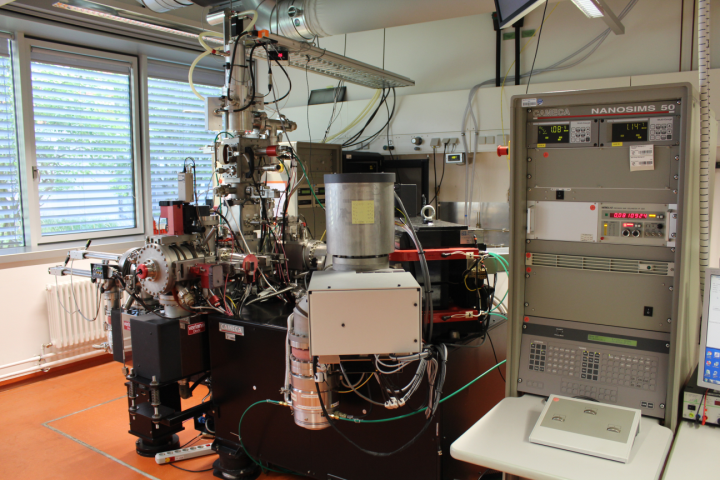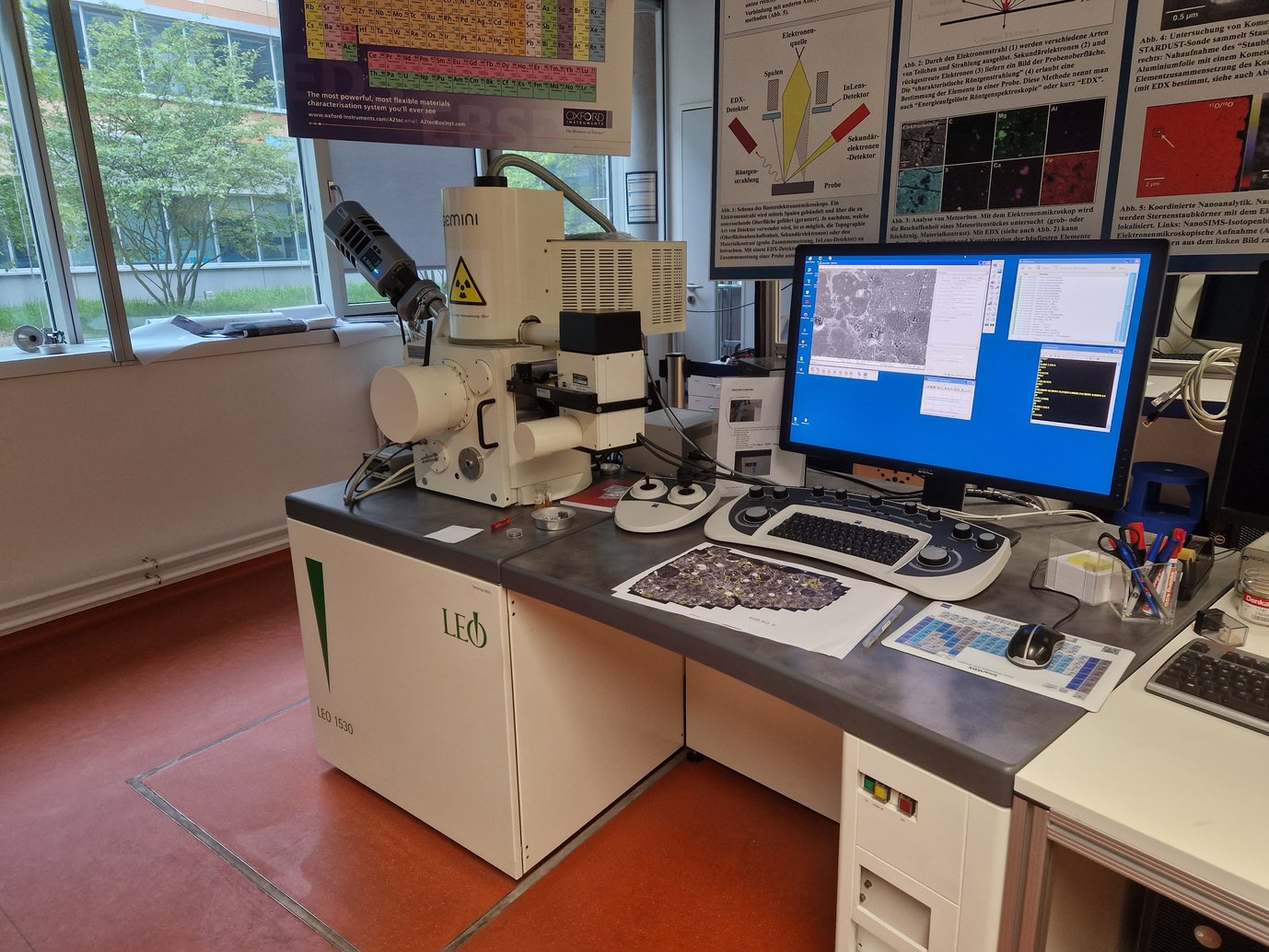Instruments of the NAMIP-Group
Cameca NanoSIMS 50 Ion Probe
The Cameca NanoSIMS 50 ion probe (Fig. 1) was delivered to the Max Planck Institute for Chemistry in spring 2001. The NanoSIMS 50 is a secondary ion mass spectrometer that is characterized by three fundamental features:
- High lateral resolution (down to 50 nanometers for Cs+ and O- primary ions)
- High detection efficiency for secondary ions (i.e., high transmission through the mass spectrometer) at high mass resolution
- Parallel detection of up to five isotopes
The combination of these features is unique to the NanoSIMS 50, making it a valuable tool for research projects in cosmochemistry, aerosol chemistry, microbiology, and geochemistry.
The NanoSIMS 50 at the Max Planck Institute for Chemistry has been named MADONNA (MAinz Dust Observatory for the Detection of Nanoscale Nuclear Anomalies).

Figure 1. The Cameca NanoSIMS 50 ion probe at the Max Planck Institute for Chemistry. Photo: MPI Chemistry.
Leo 1530 Field Emission Electron Microscope
The Leo 1530 (Fig. 2) is a high resolution field emission scanning electron microscope (SEM), which together with an energy dispersive x-ray analysis (EDX X-MAX 80 system from OXFORD Instruments) provides the ability to visualise surface features in the nm-size range and to determine chemical compositions of volumes with extensions as small as 0.3 micrometer. This makes SEM/EDX a perfect system for the analysis of extraterrestrial materials, minerals, contaminant particles, and particles collected by filtration.
Link to SEM Gallery
Specifications:
Resolution: 1 kV / 3 nm, 20 kV / 1 nm
Magnification: 20 x to 900,000 x
Accelerating Voltage: 200 V to 30 kV
Electron Gun: Thermal field emission type
Detectors: In-Lens annular, Secondary electrons (SED), Backscattered electrons (BSD), EDX


